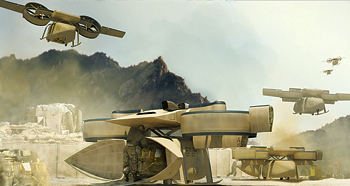INDIAN ARMED FORCES CHIEFS ON OUR RELENTLESS AND FOCUSED PUBLISHING EFFORTS

The insightful articles, inspiring narrations and analytical perspectives presented by the Editorial Team, establish an alluring connect with the reader. My compliments and best wishes to SP Guide Publications.

"Over the past 60 years, the growth of SP Guide Publications has mirrored the rising stature of Indian Navy. Its well-researched and informative magazines on Defence and Aerospace sector have served to shape an educated opinion of our military personnel, policy makers and the public alike. I wish SP's Publication team continued success, fair winds and following seas in all future endeavour!"

Since, its inception in 1964, SP Guide Publications has consistently demonstrated commitment to high-quality journalism in the aerospace and defence sectors, earning a well-deserved reputation as Asia's largest media house in this domain. I wish SP Guide Publications continued success in its pursuit of excellence.
- Indian Air Force Aims for Full Indigenous Inventory by 2047 — Air Chief Marshal A.P. Singh
- General Upendra Dwivedi takes over as the Chief of the Army Staff
- Rajnath Singh assumes charge as Defence Minister for the second consecutive term
- Admiral Dinesh K. Tripathi assumes Command of the Indian Navy as 26th Chief of the Naval Staff
- Prime Minister witnesses 'Bharat Shakti' – a Tri-Services Firing and Manoeuvre Exercise in Pokhran, Rajasthan
ARES aims to provide frontline units with mission-tailored VTOL capabilities

Unmanned aerial logistics system would bypass ground-based threats and enable faster, more effective delivery of cargo and other essential services in hard-to-reach areas
US military experience has shown that rugged terrain and threats such as ambushes and improvised explosive devices (IEDs) can make ground-based transportation to and from the front lines a dangerous challenge. Combat outposts require on average 1,00,000 pounds of material a week, and high elevation and impassable mountain roads often restrict access. Helicopters are one solution, but the supply of available helicopters can’t meet the demand for their services, which cover diverse operational needs including resupply, tactical insertion and extraction, and casualty evacuation.
To help overcome these challenges, the Defense Advanced Research Projects Agency (DARPA) unveiled the Transformer (TX) programme in 2009. Transformer aimed to develop and demonstrate a prototype system that would provide flexible, terrainindependent transportation for logistics, personnel transport and tactical support missions for small ground units. In 2013, DARPA selected the aerial reconfigurable embedded system (ARES) design concept to move forward.
“Many missions require dedicated vertical take-off and landing (VTOL) assets, but most ground units don’t have their own helicopters,” said Ashish Bagai, DARPA Program Manager. “ARES would make organic and versatile VTOL capability available to many more individual units. Our goal is to provide flexible, terrain-independent transportation that avoids ground-based threats, in turn supporting expedited, cost-effective operations and improving the likelihood of mission success.”
ARES would centre on a VTOL flight module designed to operate as an unmanned aerial vehicle (UAV) capable of transporting a variety of payloads. The flight module would have its own power system, fuel, digital flight controls and remote command-andcontrol interfaces. Twin tilting ducted fans would provide efficient hovering and landing capabilities in a compact configuration, with rapid conversion to high-speed cruise flight similar to small aircraft. The system could use landing zones half the size typically needed by similarly sized helicopters, enabling it to land in rugged terrain and aboard ships.
It is envisioned that the flight module would travel between its home base and field operations to deliver and retrieve several different types of detachable mission modules, each designed for a specific purpose—cargo pickup and delivery, casualty extraction or airborne intelligence, surveillance, and reconnaissance (ISR) capabilities, for instance. The flight module would have a useful load capability of up to 3,000 pounds, more than 40 per cent the take-off gross weight of the aircraft.
Units could direct the flight modules using apps on their mobile phones or ruggedised tablets. Initially, the system would be unmanned, with a future path towards semi-autonomous flight systems and user interfaces for optionally manned/controlled flight.
ARES is currently in its third and final phase. Lockheed Martin Skunk Works is the lead vehicle design and system integration performer for Phase 3 of the programme.





